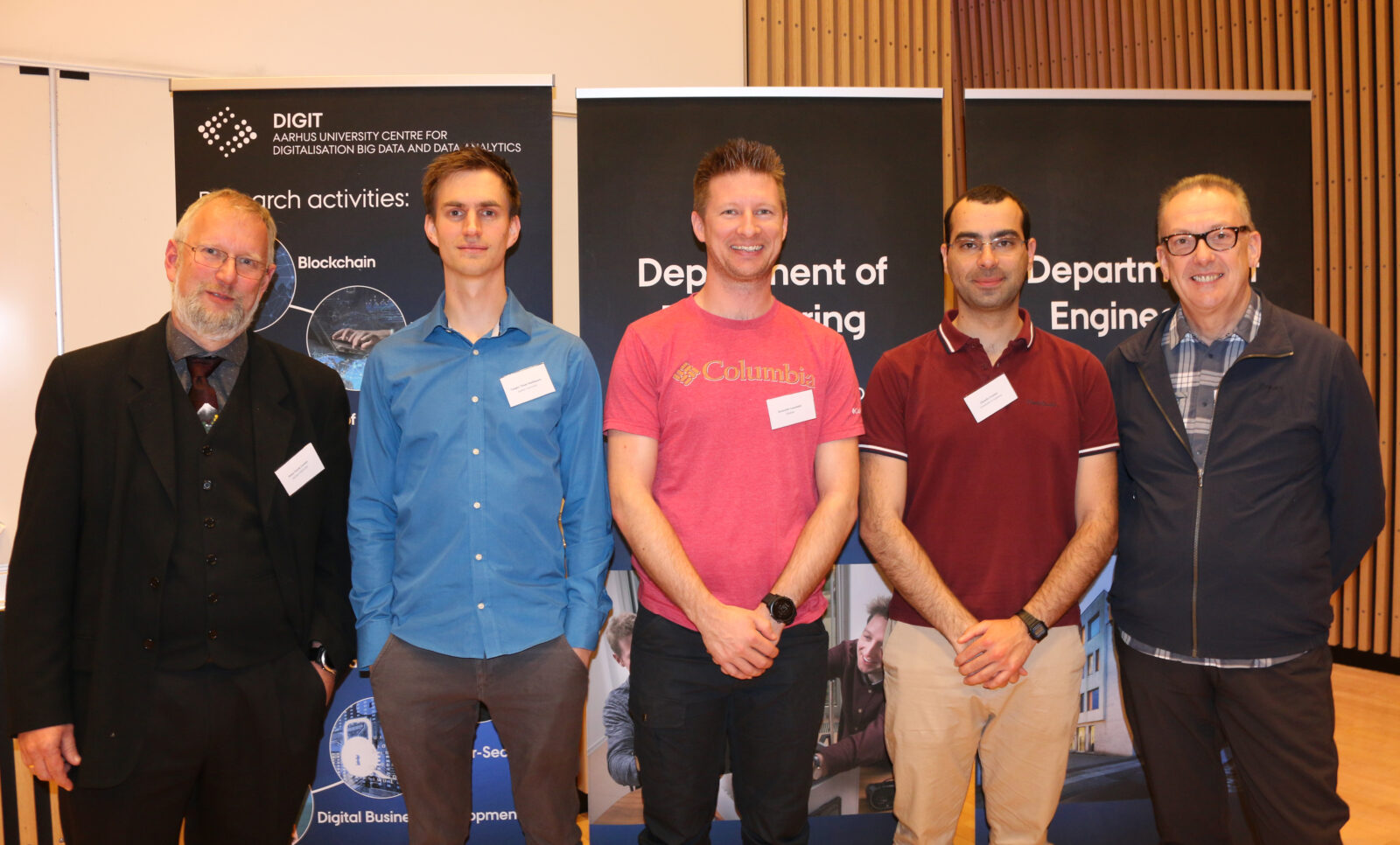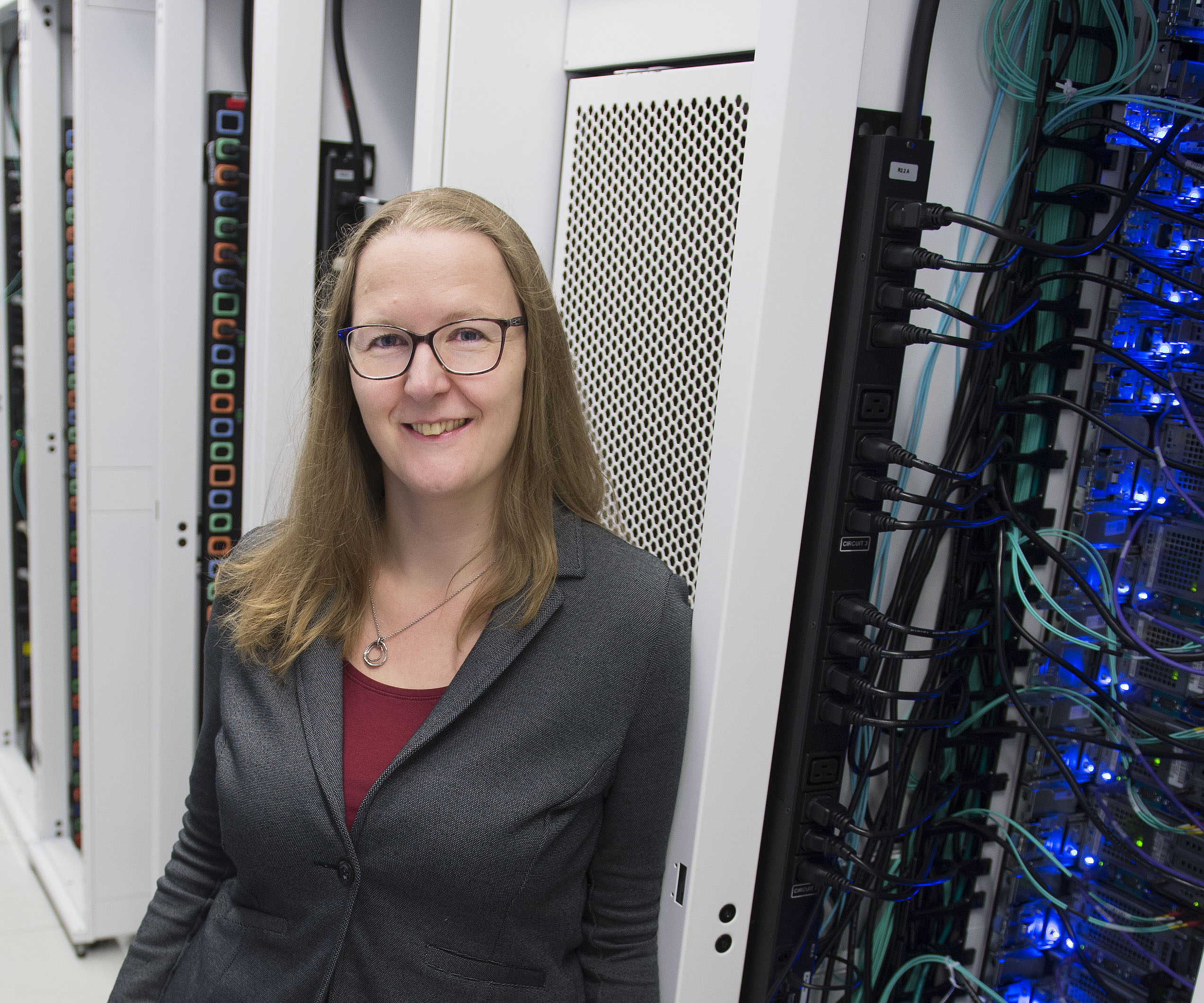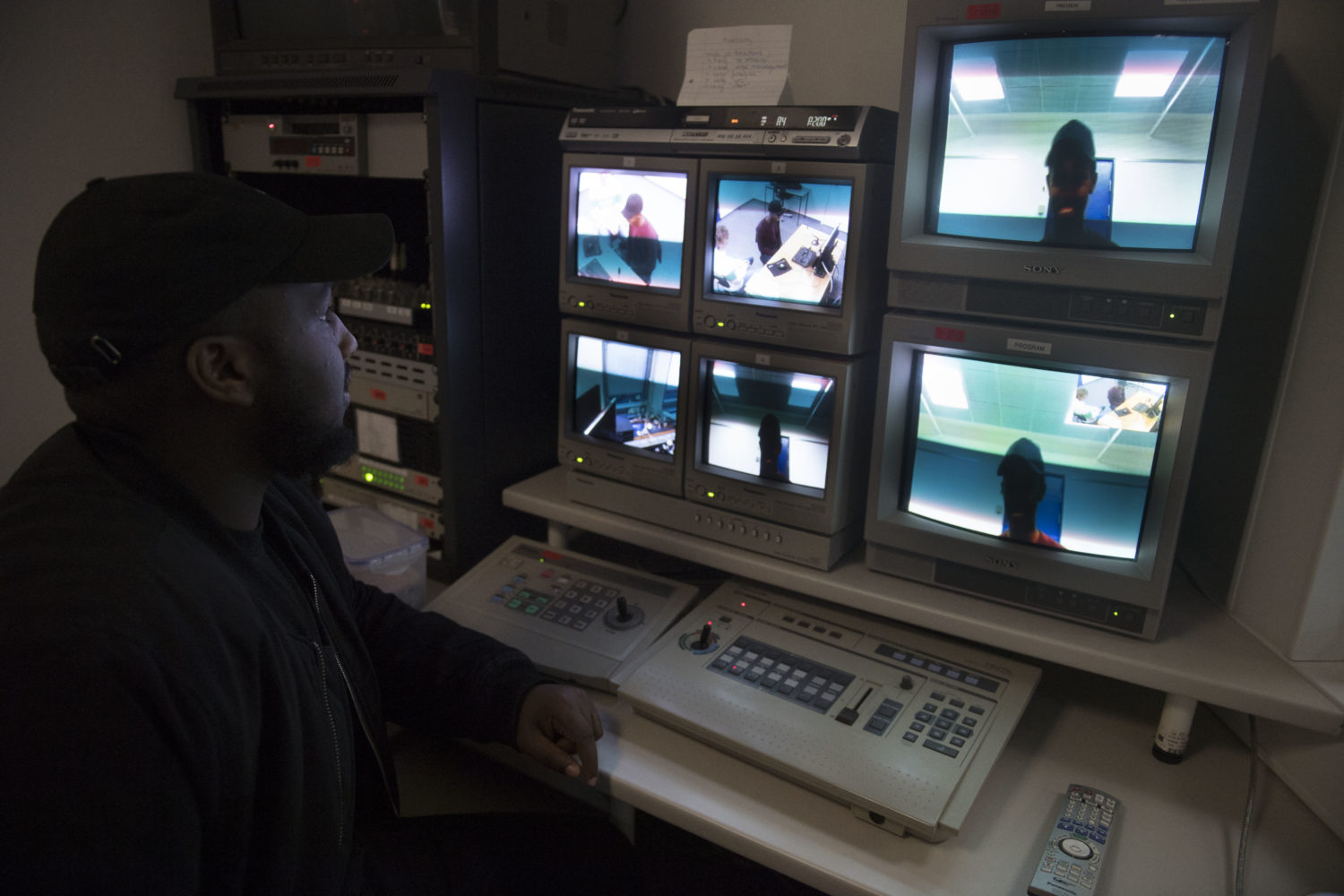The guests were offered a tour of the new lab after the official opening, which included a speech by the Foundation’s Executive Director, Kim Skibsted, and a guest lecture by Professor Sven Mattisson of Ericsson Research in Lund (Sweden) who gave an introduction to his work developing the BlueTooth technology some twenty years ago together with thte future perspectives for the 5th generation (5G) wireless communications.
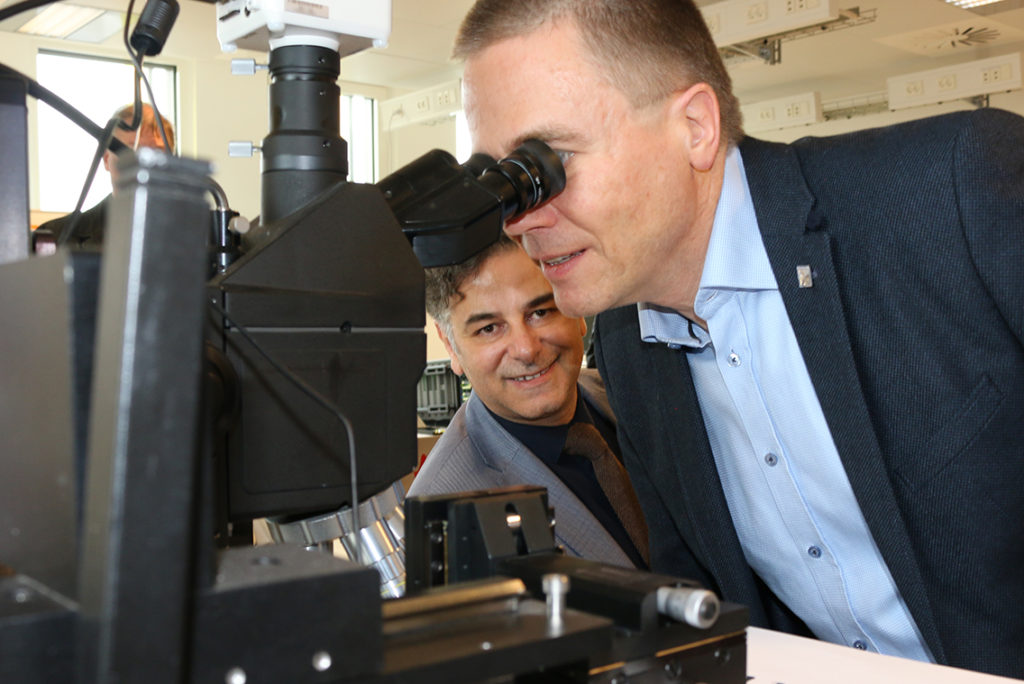
The Foundation’s Programme Manager for Research, Poul Toft Frederiksen, inspects the lab equipment. Behind him Professor Zito.
The lab is fitted with advanced measuring equipment from among others Keysight Technologies (former Agilent/HP). It will help the researchers verify the performance of the advanced electronics they are designing. It will obviously also play an important part in educating civil engineers for the industry.
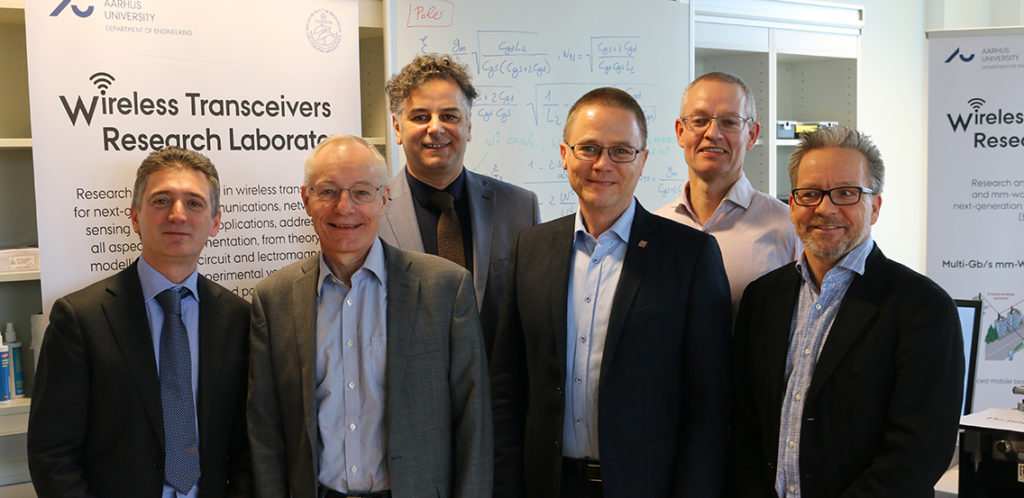
From left: Giovanni D’Amore, Keysight Technologies, Prof. Sven Mattisson, Ericsson Research, Prof. Domenico Zito, AU Engineering, Programme Manager Poul Toft Frederiksen, Poul Due Jensen Foundation, Head of Department Prof. Thomas Skjødeberg Toftegaard, AU Engineering and Docent Jens Kargaard Madsen, AU Engineering.
Important research
Today. there are more mobile subscriptions than there are people on Plant Earth. That’s why future growth in wireless technology is to be found in communication between machines and devices(Internet of Things). It also means that the amount of data communication will continue to grow exponentially, creating a need for the use of more frequencies. Professor Zito’s research can exploit new frequency bands with the needed space for that data traffic.
Although the lab is only just ready, Professor Zito has already shown a series of impressive results. You can read about them in this interview in the Foundation’s Annual Review 2018.


